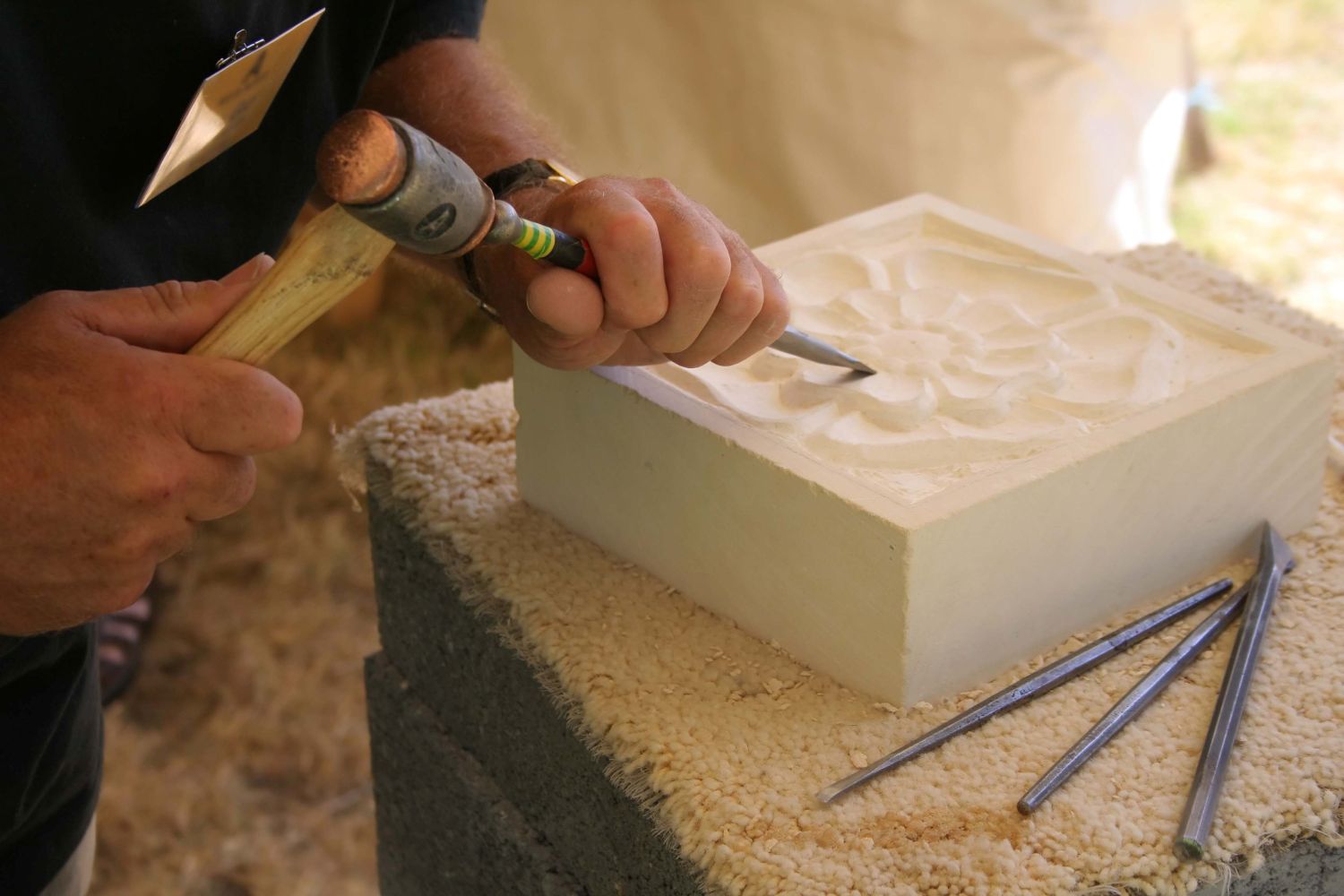What will happen when we lose the forgotten building trades?
Across the world, there are trades that once defined the built environment, but now exist on the edge of extinction. Stonemasonry, lead working, traditional timber framing, decorative plasterwork and specialist metal casting were once central to construction and repair. They required years of training, an understanding of materials built up over centuries and a precision that only experience could bring. Today, the number of people able to perform these crafts is shrinking to a point where many fear that within a generation, some skills will disappear entirely, writes John Ridgeway.
The crisis is not a result of lack of need. Historic buildings, bridges, monuments and public works still require maintenance and restoration. New projects in heritage and conservation demand authenticity in both materials and techniques. But the pool of skilled crafts people able to meet these demands is diminishing. An ageing workforce, a shortage of apprentices and the dominance of modern building methods have created a gap that is widening each year.
In stonemasonry, once a common trade in towns and cities, the number of master masons has dropped dramatically. Cutting, shaping and setting stone for structural and decorative purposes is a skill learned through years of guided practice. The mason’s tools may appear simple - mallets, chisels, hammers - but the craft depends on deep knowledge of the stone’s grain, hardness and response to each strike. This understanding is not taught in a classroom alone - it is absorbed through daily work under the eye of an experienced mason. As fewer young people enter the trade, this direct transmission of knowledge is breaking down.
Lead working faces a similar challenge. Lead has been used in roofing, flashing, guttering and decorative elements for centuries, valued for its malleability and longevity. Shaping and fitting lead sheets demands physical strength, precision and an awareness of how the material expands and contracts over decades of exposure. Poorly executed leadwork can fail within years, causing structural damage and water ingress. Many heritage buildings depend on expert lead workers for their survival, yet in parts of the country there are now fewer than a dozen able to work at the highest standard.
The disappearance of these trades is not just a loss to heritage conservation - it is a risk to public safety and the durability of buildings. Modern materials and methods often cannot replace traditional ones in certain contexts. For example, replacing lime mortar in a historic stone wall with modern cement can trap moisture and accelerate decay. Without masons who understand why lime was used in the first place, restoration projects can cause more harm than good.
Related read: The scale of our concrete consumption and why greener materials matter.
The decline in skilled trades
The decline is driven by several factors. For decades, school leavers have been encouraged towards academic routes and away from manual trades. Apprenticeships in specialist crafts are rare and those that exist can be financially challenging for both employer and apprentice. A young person might spend years acquiring the necessary skill before earning a sustainable income. In an economy focused on short-term returns, that is a difficult proposition.
Cultural changes have also played a role. In communities where trades were once passed down through families, younger generations have sought work elsewhere, often in industries perceived as more stable or better paid. The break in generational continuity has severed a line of knowledge stretching back centuries.
In countries with rich architectural histories, this erosion of skill has already begun to have visible consequences. Restoration projects are delayed because suitable craftspeople cannot be found. Costs increase as work must be outsourced to the few remaining specialists, sometimes brought in from abroad. In some cases, projects are compromised by the use of less experienced workers, leading to substandard results that require redoing within years.
Preserving these trades demands more than nostalgia. It requires a deliberate effort to identify, train and support the next generation of craftspeople. This is a challenge compounded by the nature of the knowledge itself. Much of it is tacit - embedded in the way a master holds a chisel, reads the texture of a surface, or listens to the ring of a hammer on stone. These subtleties are difficult to capture in manuals or videos. They are passed on most effectively through direct apprenticeship, with time set aside for practice under expert supervision.
Some initiatives have attempted to address the problem. Specialist training centres, often linked to heritage organisations, offer courses in traditional skills. Grants and subsidies support apprenticeships in stonemasonry, thatching and other endangered trades. Charities and trusts dedicated to preserving historic buildings have begun funding craft training as part of their mission. Yet these efforts often operate on limited budgets and cannot meet the scale of the challenge.
Meeting the scale of the challenge
The economics are difficult. Training a master craftsman takes years, but the projects that require such skills may be intermittent. A contractor might train an apprentice only to find there is not enough work to keep them employed full-time. Without consistent demand, retaining skilled workers is a constant struggle.
The decline is also international. In parts of Europe, Asia and the Americas, specialist trades are disappearing at similar rates. Globalisation has made it easy to source prefabricated components that mimic traditional work, but lack the durability and authenticity of the original. The economic efficiency of these substitutes often outweighs considerations of heritage, leading to a further erosion of demand for true craftsmanship.
In heritage conservation, there is a growing recognition that the survival of buildings depends as much on maintaining the skills to care for them as on securing the funding to do so. A cathedral may receive millions in restoration grants, but without masons, glaziers and lead workers capable of executing the work, the money cannot be spent effectively. In some cases, the delay in finding skilled labour can lead to further deterioration, increasing the eventual cost.
The issue also intersects with education. Schools rarely promote specialist trades as viable careers, and careers advice often overlooks them entirely. Even in vocational training, the focus is frequently on modern construction methods, leaving traditional techniques unexplored. Outreach programmes that bring young people into contact with working craftspeople can shift perceptions, but they require coordination between educators, industry and government.

Another factor is the physical demand of the work. Trades like stonemasonry and lead working require strength, endurance and often, the need to work at height or in exposed conditions. While modern tools and safety equipment have reduced some risks, the work remains challenging. This can deter potential entrants who might see other careers as less physically taxing.
Despite these challenges, there are signs of renewed interest in traditional skills. Heritage tourism, public interest in historic preservation, and a growing appreciation for sustainable, long-lasting building practices are creating pockets of demand. Craftspeople who master these trades often speak of deep satisfaction in their work, a connection to history, and the visible impact of their efforts in the built environment.
The sustainability argument is particularly compelling. Many traditional building methods use local, natural materials with a far lower environmental impact than modern alternatives. A well-executed lead roof or stone wall can last for centuries with minimal maintenance, reducing waste and resource consumption over time. In an era focused on reducing carbon footprints, these attributes should not be overlooked.
However, awareness must translate into action. Governments can play a role by funding apprenticeships, mandating the use of traditional methods in certain restoration projects, and supporting small firms that keep these trades alive. Industry bodies can promote training standards and recognise excellence in craftsmanship. Architects and planners can specify authentic materials and techniques, creating consistent demand that supports the viability of these careers.
The alternative is stark. Without intervention, the next generation will inherit buildings that cannot be properly maintained because the necessary skills no longer exist. Repairs will become increasingly improvised, relying on modern substitutes that may undermine structural integrity and historic value. What was once a living tradition will be reduced to museum displays and recorded demonstrations, disconnected from the everyday work of building and repair.
There is still time to prevent that outcome, but the window is closing. Each retirement without an apprentice to take over represents another fragment of knowledge lost. The crisis is not just about trades - it is about the continuity of cultural heritage, the resilience of the built environment and the economic value of preserving structures that define communities.
The forgotten trades are not relics of a bygone era. They are living skills that, once lost, cannot be recreated easily. The tools may be simple, but the judgement required to use them well is the product of decades of accumulated understanding. Preserving that knowledge is an investment in the future, one that ensures the buildings, monuments and infrastructure we inherit will endure not just in form, but in the spirit of the craftsmanship that created them.
Additional Blogs

When fire breaks out who really knows the system
The story that caught my attention recently wasn’t about fire growth or building loss, it was about confusion. Specifically, the confusion faced by the fire service when arriving at buildings...
Read moreThe design and development of Nexus Layouts
When Zentia set out to rethink the suspended ceiling, the brief was clear: deliver greater creative freedom for designers, more distinctive visual identity for clients, and a solution that could keep...
Read more

The 100-year construction project or why longevity Is the new sustainability
For decades, the construction sector has defined sustainability through metrics such as operational energy, embodied carbon, material efficiency and circularity. These measures remain vital, but a...
Read more